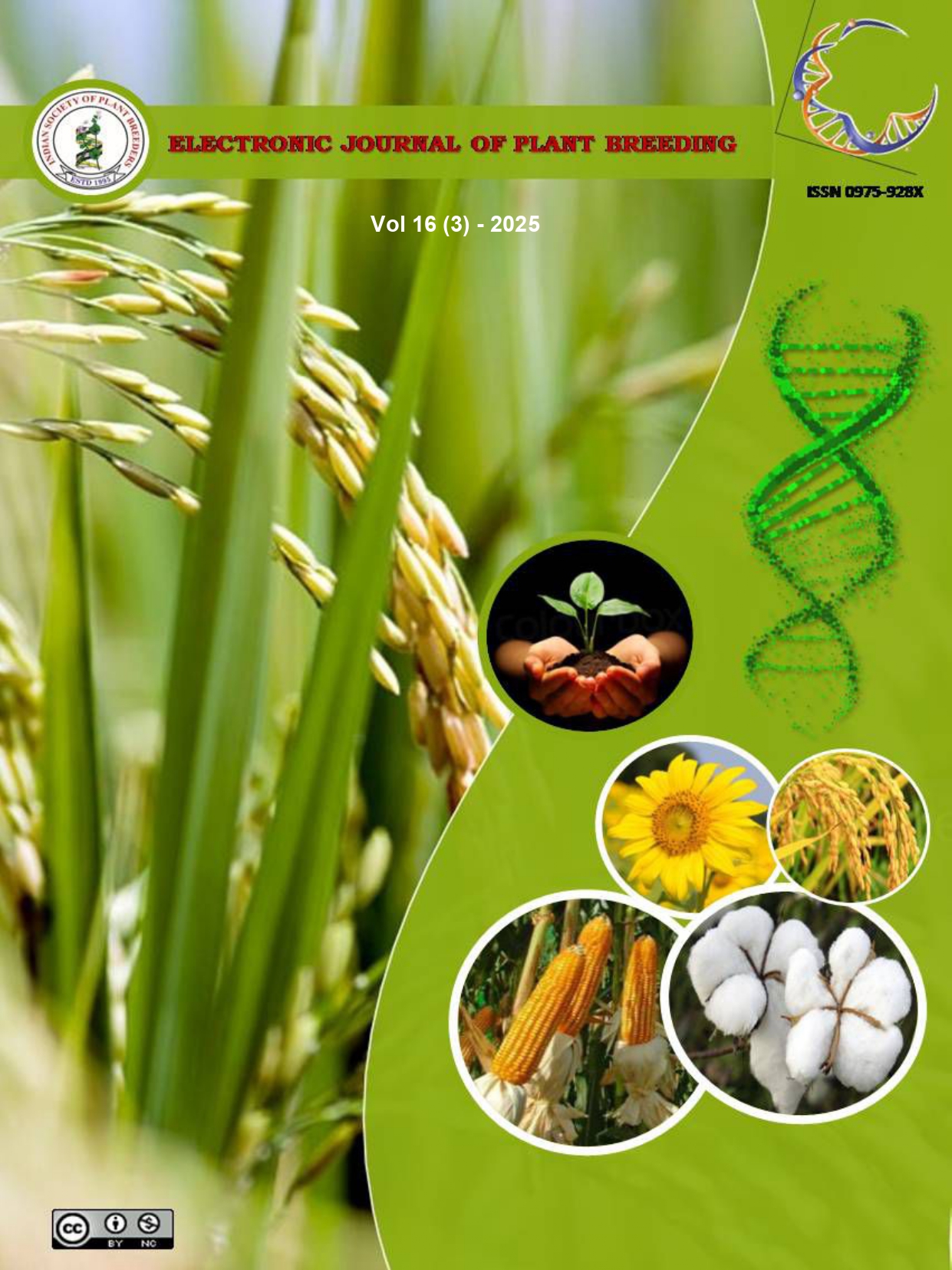Stability and performance analysis of seed yield and component traits in sunflower using AMMI and GGE biplots
Abstract
Genotype × Environment interaction is important in breeding high-performing varieties adapted for cultivation across diverse environments. The present study intended to identify the best-performing and stable sunflower hybrids across different seasonal conditions of Andhra Pradesh, India. Thirty-three sunflower hybrids, along with three checks, were evaluated over three growing seasons Rabi 2022-23 (E1), Kharif 2023 (E2), and Rabi 2023-24 (E3 at the Regional Agricultural Research Station in Nandyal. The combined analysis of variance demonstrated that genotype, environment, and their interaction had significant effects on seed yield and its associated traits. Based on AMMI analysis, the genotypes SH 2671 and SH 2731 showed high mean and less interaction with seasonal conditions for seed yield and oil yield traits. The GGE biplot analysis indicated that the hybrids SH 2736, SH 2731, SH 2667, SH 2671 and SH 2664 showed high mean and less variation over different seasonal conditions for seed yield and oil yield traits. The seasonal conditions showed good discriminativeness and representative abilities for E1, E2 and E3 conditions. The E1 and E2 form one mega environment, and E3 forms a separate mega environment. The which-won-where view biplot showed that the hybrids SH 2723 and SH 2729 are the best performers in E1 and E2 conditions for seed yield and oil yield traits. Overall, the hybrids SH 2723, SH 2730, SH 2729, SH 2731 and SH 2671 can be suggested for cultivation over different seasonal conditions.

